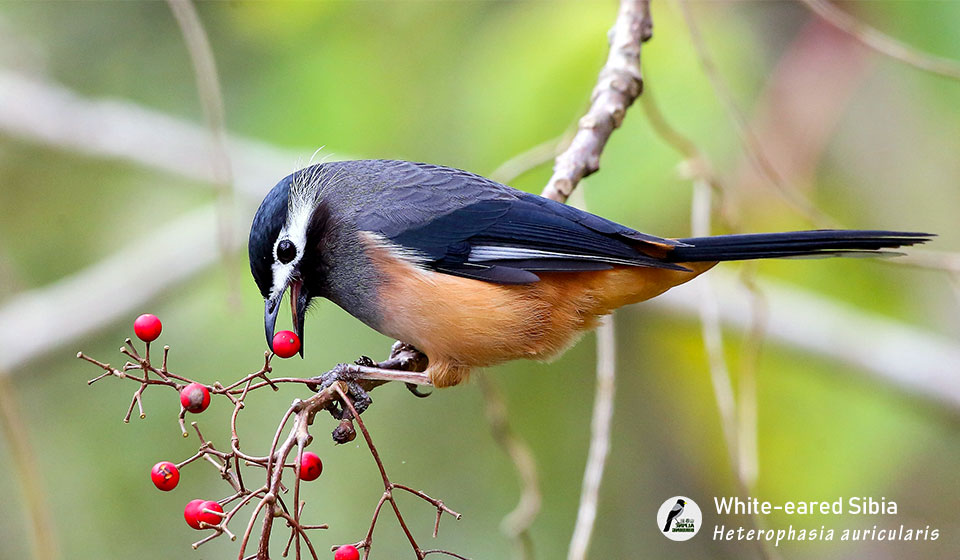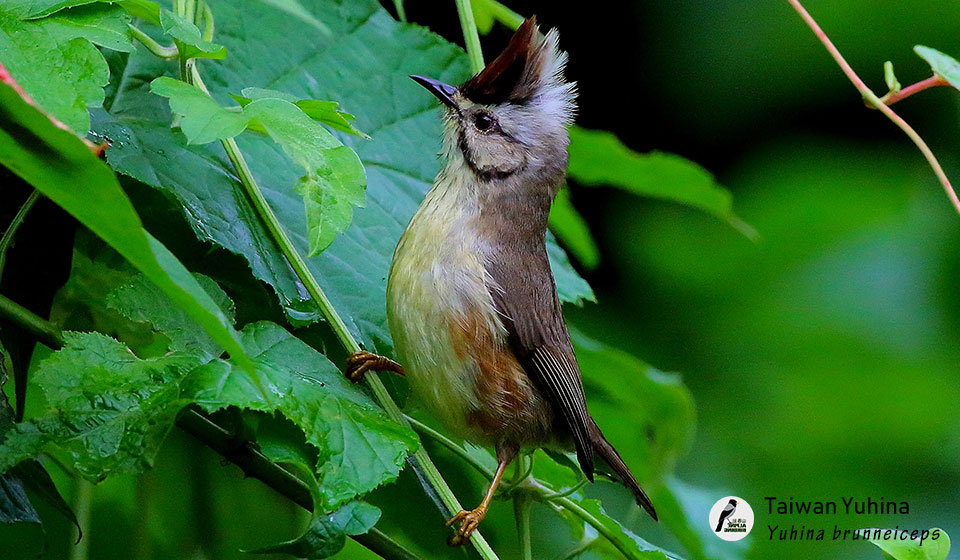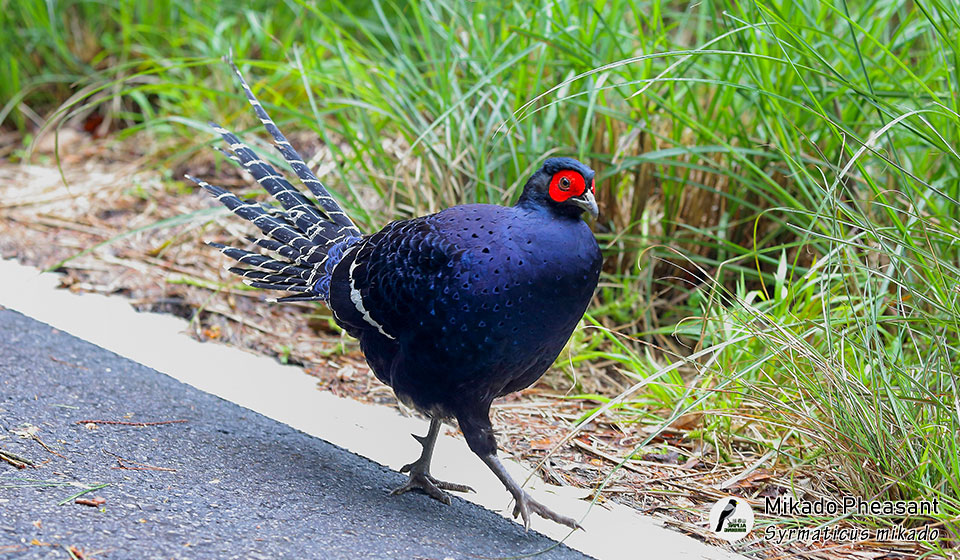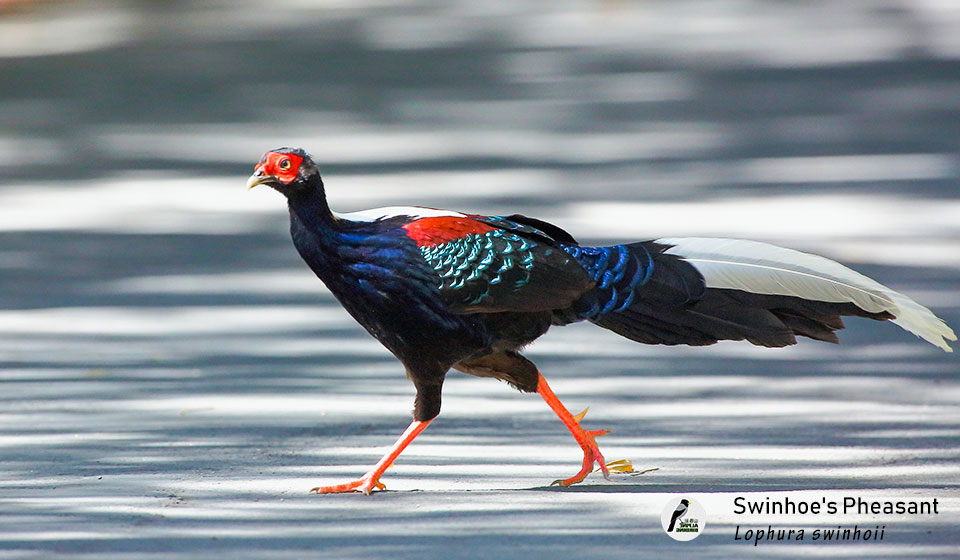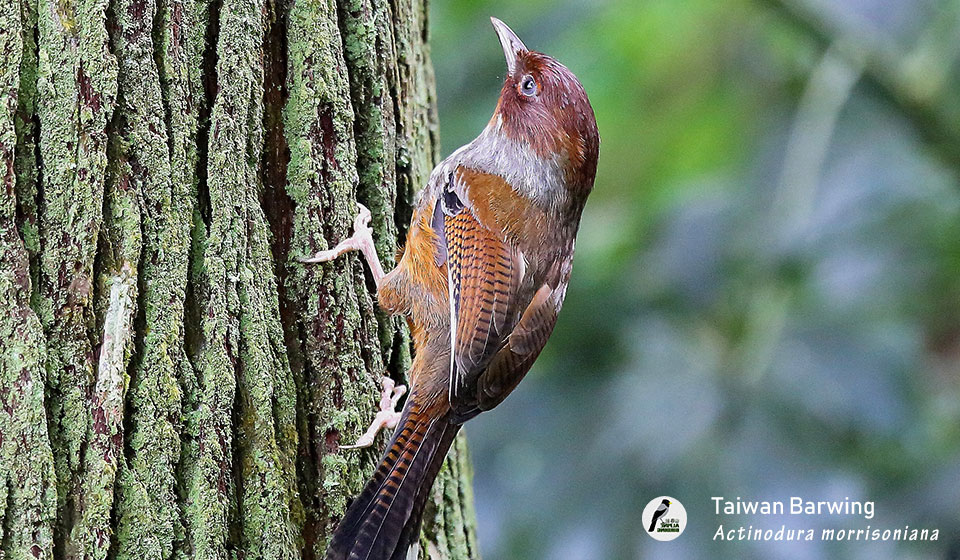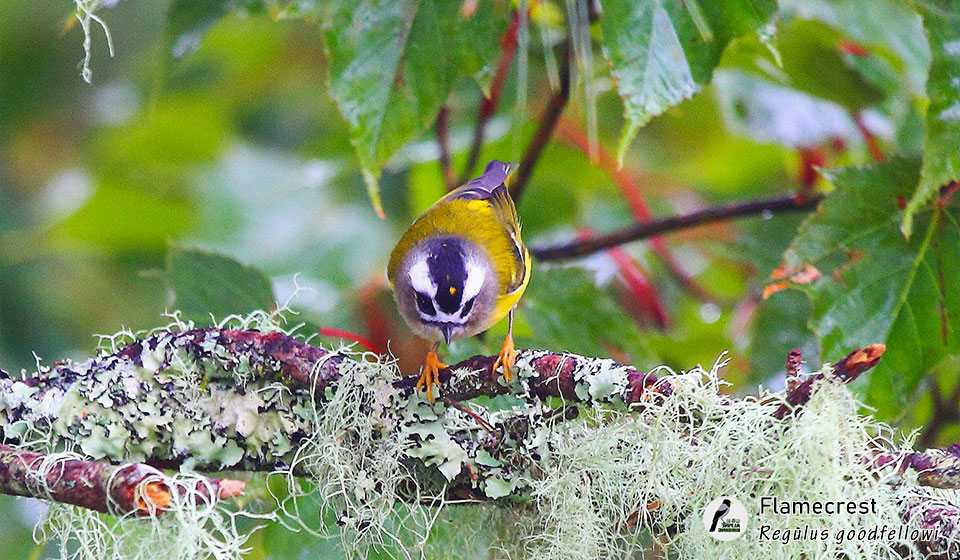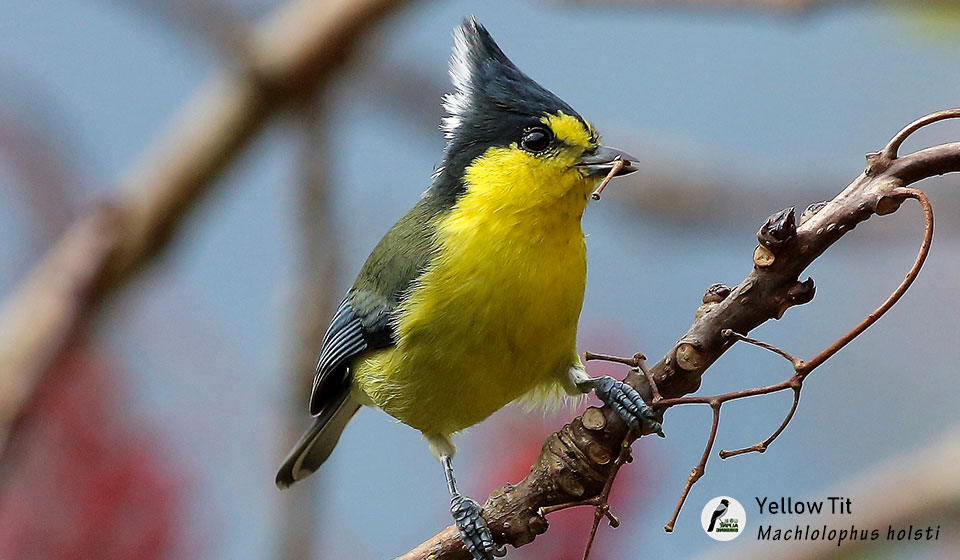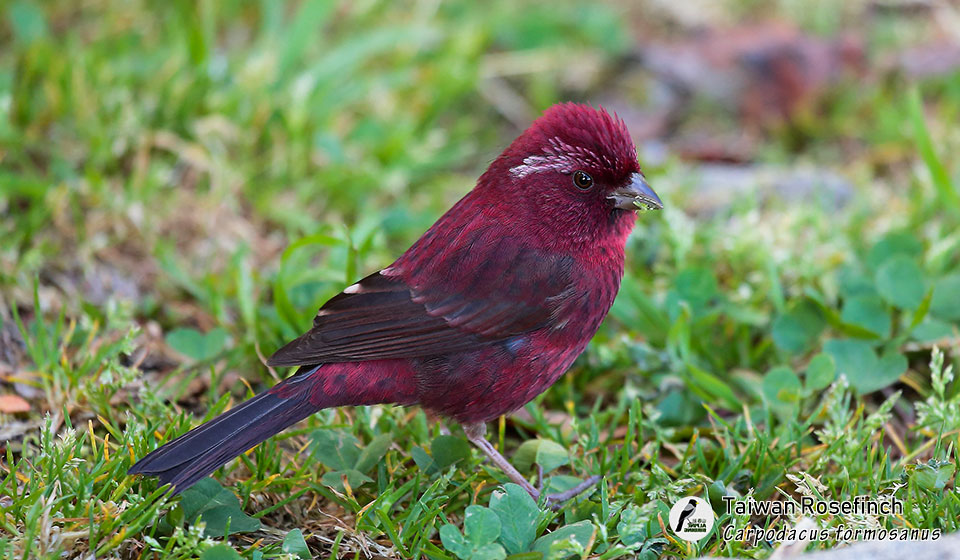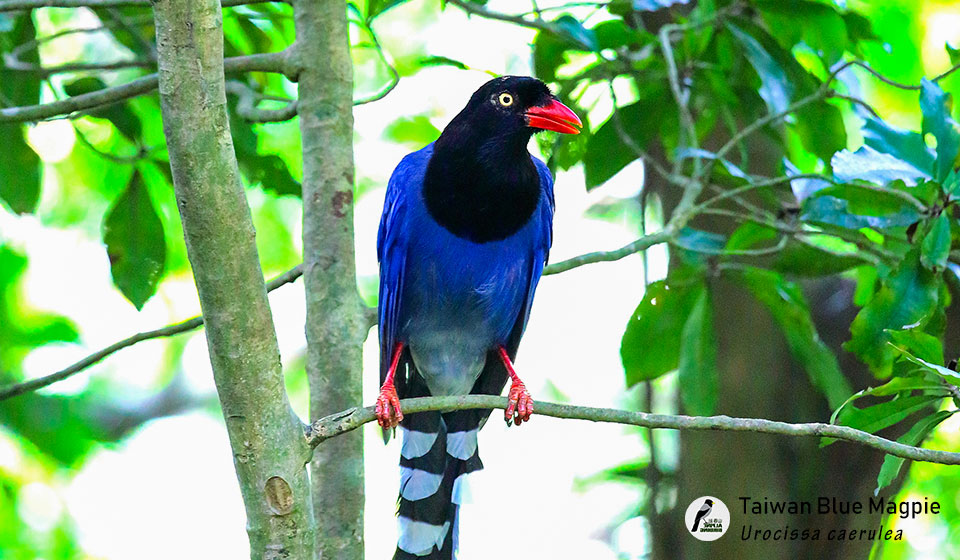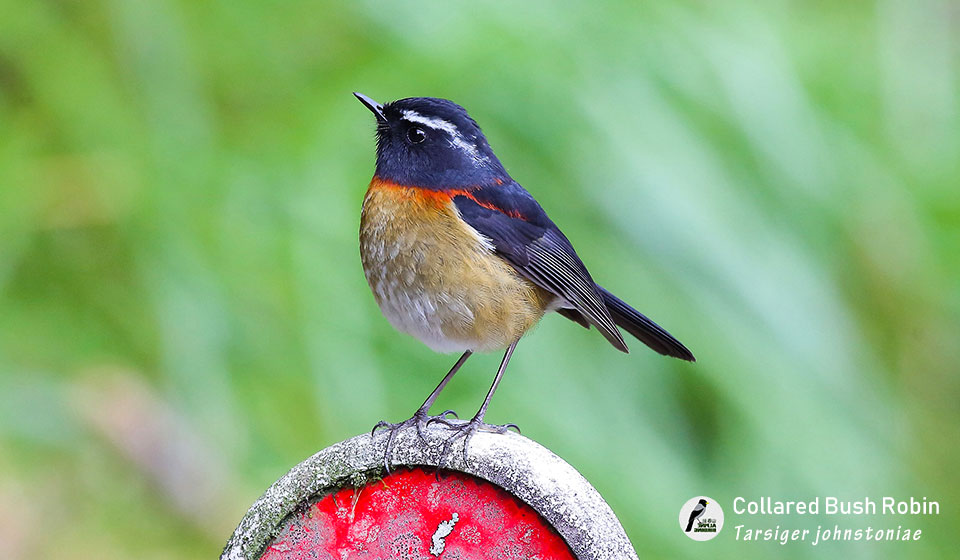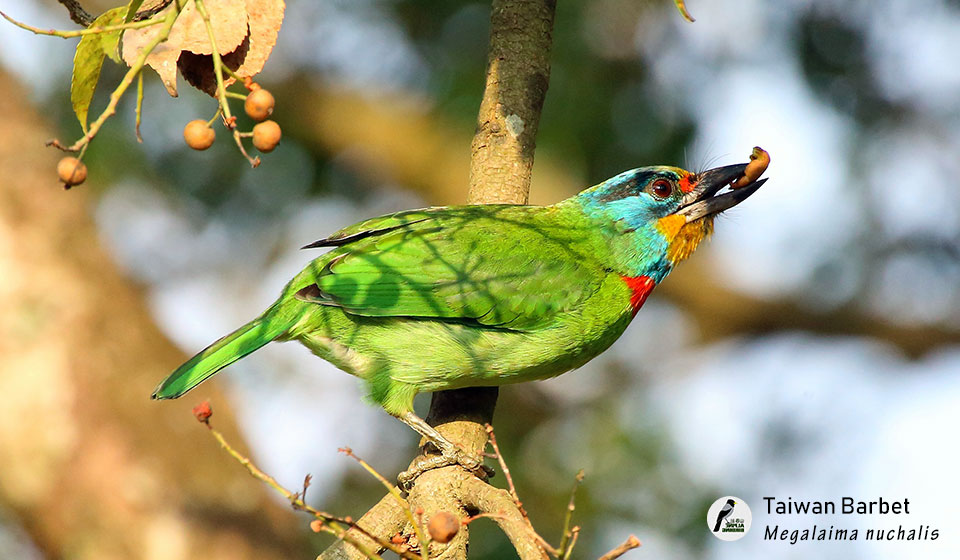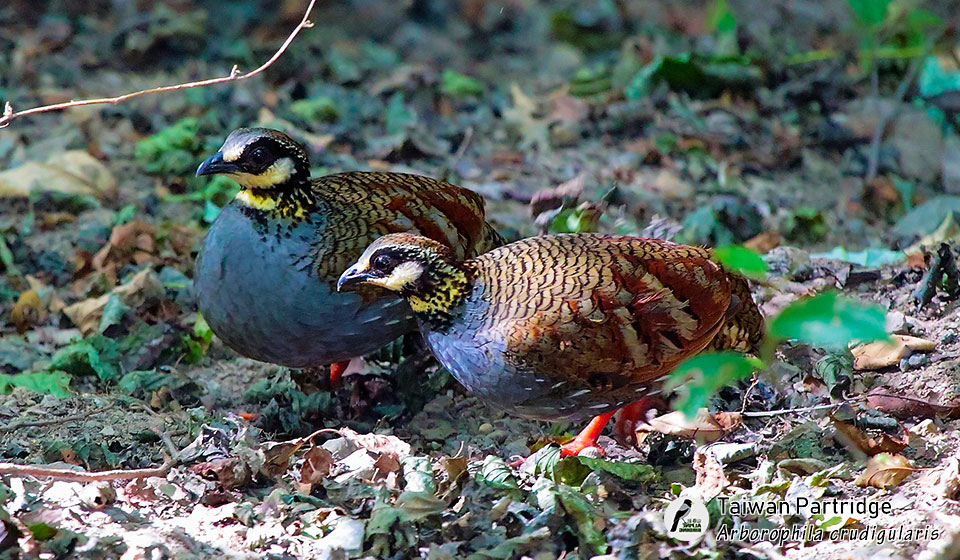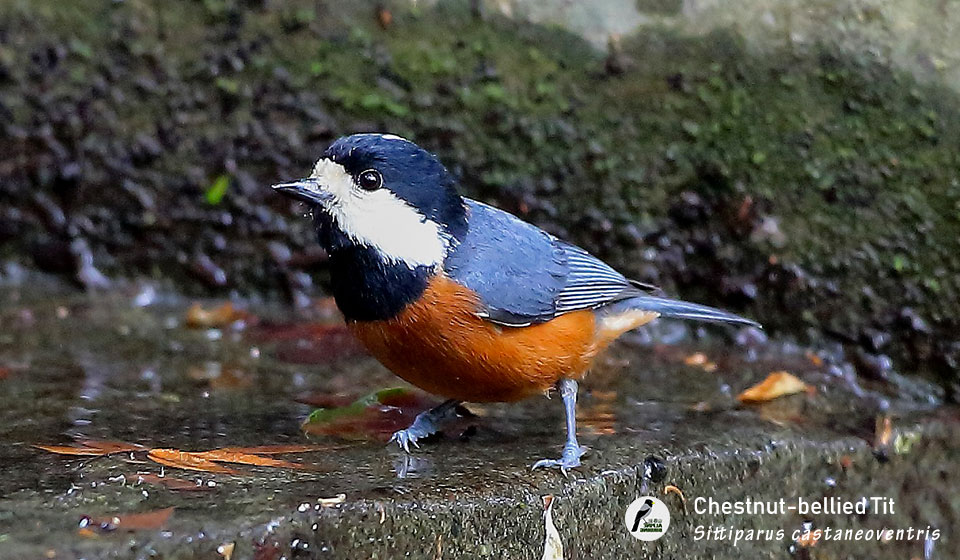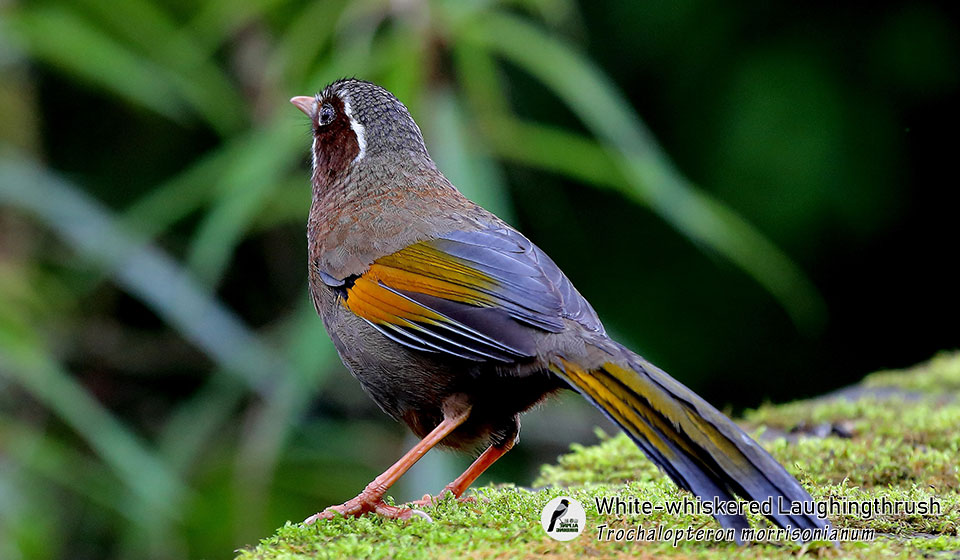Explore Breeding Endemics with Migratory Birds and Lanyu Island via East Coast
Million years ago, the plate collision between the Eurasian plate and Philippine plate created Taiwan Island. Two hundred kilometers off the east coast of mainland China, Taiwan is an isolated area that has nursed many extraordinary endemic species. Considering its size, the density of the endemic species are superior. According to "Taiwan bird checklist (2014)", 626 kinds of bird have been recorded here, in which 25 kinds are endemic to Taiwan including Taiwan Partridge, Swinhoe's Pheasant, Mikado Pheasant, Taiwan Barbet, Taiwan Blue Magpie, Yellow Tit, Styan's Bulbul, Flamecrest, Taiwan Bush Warbler, Collared Bush Robin, Taiwan Whistling Thrush, Rufous-crowned Laughinghrush, Taiwan Hwamei, White-whiskered Laughingthrush, Steere's Liocichla, Black-necklaced Scimitar Babbler, Taiwan Scimitar Babbler, Taiwan Wren Babbler, Taiwan Barwing, Taiwan Fulvetta, White-eared Sibia, Taiwan Yuhina, Taiwan Rosefinch.
We can normally cover all of them on this tour. Additionally, there are 70+ kinds of endemic subspecies, some of them are gradually upgraded to full species status. Besides, the delicate food and pleasant weather are a bonus for this trip.
Tour Info Sheet
| Highlight Birds | Mikado Pheasant, Swinhoe's Pheasant, Taiwan Partridge, Taiwan Bamboo Partridge, Collared Scops Owl, Mountain Scops Owl, Ryukyu Scops Owl, Flamecrest, Taiwan Cupwing, Taiwan Bush Warbler, Taiwan Fulvetta, White-whisked Laughingthrush, Taiwan Barwing, Collared Bush Robin, Taiwan Rosefinch, White-browed (Taiwan) Shortwing, White-browed Bush Robin, Grey-headed Bullfinch, White-backed Woodpecker, Little Forktail, Golden Parrotbill, Taiwan Blue Magpie, Taiwan Barbet, Taiwan Whistling Thrush, Yellow Tit, Green-backed Tit, Rusty Laughingthrush, Rufous-crowned Laughingthrush, Taiwan Yuhina, Black-necklaced Scimitar Babbler, Taiwan Hwamei, White-eared Sibia, Steere's Liocichla, White-backed Woodpecker, Brown Bullfinch, Snowy-browed Flycatcher, Vivid Niltava, Taiwan (Island) Thrush, Alpine Accentor, Styan's Bulbul, Japanese Paradise Flycatcher, Whistling Green Pigeon, Brown-eared Bulbul, Lowland White-eye, Pacific Reef Heron, etc. |
|---|---|
| Numbers of Species to Expect | 150-200 |
| Ease of Birding | mostly easy birding with a few tricky species |
| Highlight Mammals | Red-and-White (White-faced) Flying Squirrel, Taiwan Serow, Reeves's Muntjac, Formosan Rock Macaque, etc. |
| Other Attractions | delicate food, stunning island scenery |
| Photography Opportunities | birding focused but with very good photography chances |
| Habitats Covered | subtropical forests, woodlands, wetlands, coast, island |
| Expected Climate | comfortable, cool in the morning, windy on the coast, rain is possible |
| Physical Requirements | mostly easy, moderate but optional in certain parts |
| Accommodation | very comfortable |
| Transportation | minibus |
What makes this trip irreplaceable?
1. This trip is jointly produced by AlpineBirding and Asia Bird Fair (ABF), which aims to provide a splendid birding experience and introduce the bird resources of Taiwan to more people. With the joint efforts and complementary advantages, we can surely make a once-in-a-lifetime birding experience for you.
2. Our experienced local guides have served western birders for many years, they know local birds and the latest bird info well, at the same time they know your needs and preferences the most.
3. This trip covers all the endemic species and a lot of endemic subspecies of Taiwan.
4. This trip covers all the important birding sites of Taiwan including Dasyueshan, Anmanshan, Dongshi, Lanyu, Alishan, etc.
5. We run the trip in the best season. Not only birds are in the breeding seasons, but all the destinations have the most beautiful scenery in this season.
6. Small groups with more flexibility. The group is limited to 8 birders so that we can maximize the chance of each participant.
7. We have been a reliable local partner for some prestigious western birding and wildlife travel companies for over a decade.
8. We have a strong logistic team to ensure the trip goes smoothly and to ensure you a comfortable and enjoyable journey.
Dates & Prices
| Dates | Booking Status | Price | Single Supplement | Group Size | Guides |
|---|---|---|---|---|---|
| Customizable | Space Available | TBA | TBA | 6-8 | Local Guide |
Slide the sheet to the left to see the full sheet if you are viewing it on your phone or tablet.
The cost includes the following:
1. Private transportation throughout the trip, including airport pick-up and drop-off at Taipei or Taoyuan International Airport.
2. All meals from dinner on day 1 to breakfast on day 13.
3. All the entrance tickets for places listed in the itinerary including cable cars and shuttle buses.
4. Hotel stays from the first day to the last day, two clients occupy one twin-bed room on a sharing basis at nice 3 or 4-star hotels in big cities and local best guesthouses in remote areas.
5. Bottled water and snacks throughout the trip.
6. Simple western breakfast whenever is possible.
7. Service charges of a professional and experienced local bird guide throughout the whole trip.
8. China domestic travel insurance.
9. Service of all logistic supports.
The cost does not include the following:
a. Drinks during meals.
b. Extra charges due to change of itinerary from the client's side or factors beyond the control of AlpineBirding such as natural disasters or governmental policy changes.
c. Discretionary tips to guides and drivers.
d. All personal expenses such as laundry service.
e. ANY AIRFARE except those stated in the itinerary.
f. Any program not listed in the itinerary.
Itinerary
Tour Map
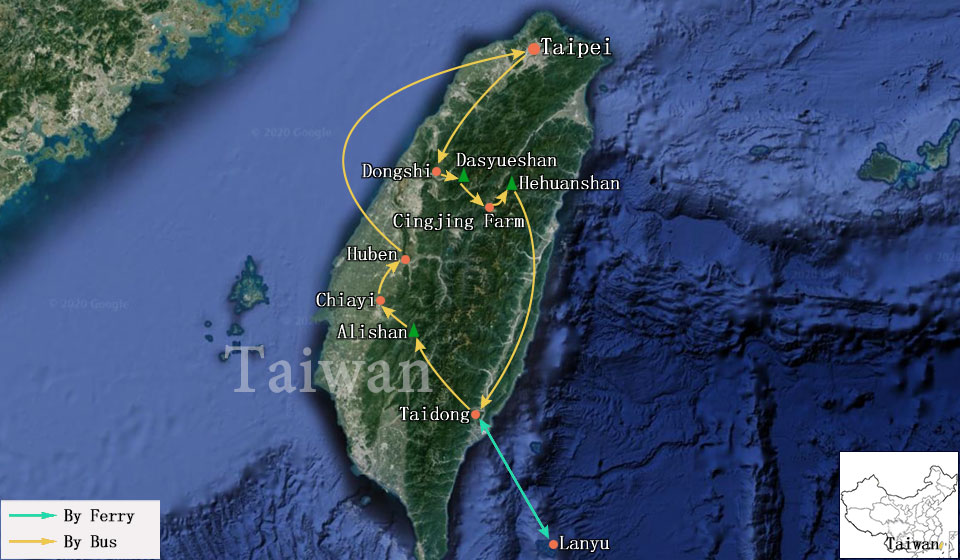
Day 1: Arrival in Taipei.
Upon arrival at the airport in Taipei, you will be met either by your private birding guide or driver before being escorted to your hotel accommodation. We will go birding around the hotel if time permits.
Day 2: Taipei to Dasyueshan region via Yangmingshan.
In the morning we will visit one to two birding sites in Yangmingshan National Park, such as Qianshan Park and Menghua Lake. Qianshan Park is found in the middle area of the Yangminghshan National Park that features a variety of lakes and lush forests. During our visit, we will have good opportunities to view a variety of urban bird species such as Taiwan Blue Magpie, Taiwan Barbet, Taiwan Whistling Thrush, Malayan Night Heron, etc. Taiwan Blue Magpie is the target species we have to find here, as it is quite difficult out of the Taipei region. Menghua Lake is on the other side of Yangmingshan which is a good place to look for the difficult Taiwan Bamboo Partridge, especially in good weather conditions.
Followed the exploration, we will leave the Yangmingshan region and drive southward to the most important birding site--the Dasyueshan region and spend 3 full days there. In the afternoon, we usually have 2-3 hours to look for birds in the lower elevation (<1,000m) before sunset, our top birding targets this afternoon are Taiwan Scimitar Babbler, Black-necklaced Scimitar Babbler, Taiwan Hwamei, Morrison's Fulvetta, etc.
Day 3: Dasyueshan & surrounds (Guguan & Baxianshan region).
In the morning, we will take a one-hour drive to the Guguan region (~800m) to look for Chestnut-bellied Tit and other low-elevation birds. If we can't find these species there, we will visit Baxianshan Forest Recreation Area to resume our search. In this region, we also have chances to find Brown Dipper and Taiwan Blue Magpie again.
This afternoon, we will drive back to the Dasyueshan region and concentrate on low and mid elevation. There are some key birding sites where we will focus on Swinhoe's Pheasant and the shy Taiwan Partridge. Swinhoe's Pheasant is fairly common in the Dasyueshan region, but the Taiwan Partridge might be harder to spot as a result that we may have to try several times. In addition, we also have chances to see Yellow Tit, Green-backed Tit, Rusty Laughingthrush, Rufous-crowned Laughingthrush, Taiwan Yuhina, Black-necklaced Scimitar Babbler, Taiwan Hwamei, White-eared Sibia, Steere's Liocichla, Taiwan Cupwing, White-backed Woodpecker, Brown Bullfinch, Snowy-browed Flycatcher, Vivid Niltava, as well as the gorgeous but elusive Taiwan (Island) Thrush.
This afternoon, we will drive back to the Dasyueshan region and concentrate on low and mid elevation. There are some key birding sites where we will focus on Swinhoe's Pheasant and the shy Taiwan Partridge. Swinhoe's Pheasant is fairly common in the Dasyueshan region, but the Taiwan Partridge might be harder to spot as a result that we may have to try several times. In addition, we also have chances to see Yellow Tit, Green-backed Tit, Rusty Laughingthrush, Rufous-crowned Laughingthrush, Taiwan Yuhina, Black-necklaced Scimitar Babbler, Taiwan Hwamei, White-eared Sibia, Steere's Liocichla, Taiwan Cupwing, White-backed Woodpecker, Brown Bullfinch, Snowy-browed Flycatcher, Vivid Niltava, as well as the gorgeous but elusive Taiwan (Island) Thrush.
Day 4: Dasyueshan FRA (mid to high elevation).
On the fourth day of this itinerary, we will spend the whole day in mid to high elevation zones of the Dasyueshan region looking for birds. We can walk about 1km in the mid-elevation area and try our targets again. If we are successful in our search for mid-elevation species, we could continue to high-elevation birds in advance. For owls, we will go back to low elevation in the late afternoon then find a good and quiet place to wait until sunset. Among the species in this region, the Collared Scops Owl and Mountain Scops Owl are two common owls to spot.
Day 5: Dasyueshan FRA (Anmanshan).
This morning, we will depart from our accommodation with all our luggage and continue our search at high elevations. The most important target there is Mikado Pheasant, at the same time, we can expect Flamecrest, Taiwan Cupwing, Taiwan Bush Warbler, Taiwan Fulvetta, White-whisked Laughingthrush, Taiwan Barwing, Collared Bush Robin, Taiwan Rosefinch, White-browed (Taiwan) Shortwing, White-browed Bush Robin, Gray-headed Bullfinch, White-backed Woodpecker, Little Forktail, Golden Parrotbill, etc.
Later this evening, we will have an excellent chance to spot two local mammal species, namely the Taiwan Serow and Red-and-White (White-faced) Flying Squirrel just around the restaurant and accommodation region.
Day 6: Dasyueshan FRA to Cingjing Farm.
This morning is our last chance to see birds in the Dasyueshan region, so our guide will prioritize species we haven't seen yet. Among all the endemic species, there are three birds in Dasyueshan we feel a high priority to find, namely Yellow Tit, Rusty Laughingthrush, and Rufous-crowned Laughingthrush. They are uncommon in Dasyueshan, but even more difficult to spot in other regions.
On the way to Cingjing (Qingjing) Farm, we can spend one hour in the township of Puli. This area provides a good opportunity to find Maroon Oriole and Taiwan Hwamei. Additionally, there is a chance to find Taiwan Blue Magpie here, however, they are not very common in this area. We will start our search upon arrival at the farm, we might spot the elusive Taiwan Bamboo Partridge and some mid-elevation birds like Black-necklaced Scimitar Babbler, Brown Bullfinch, etc.
Day 7: Cingjing Farm to Taidong via Wuling and Tianxiang.
Today we will drive to Taidong via Wuling which is the highest road (up to 3,275m) of East Asia. The Wuling area is a part of Taroko National Park and is situated next to Hehuanshan. We will stop at one or two parking lots on the way to look for some high-elevation birds such as Taiwan Rosefinch, Alpine Accentor, Taiwan Fulvetta, White-whiskered Laughingthrush, Taiwan Cupwing, Collared Bush Robin, White-browed Bush Robin, White-browed (Taiwan) Shortwing, Gray-headed Bullfinch, Golden Parrotbill. If we fail to spot Mikado Pheasant before, this bird will be one of our top targets here. Additionally, this area is quite suitable for Flamecrest, Taiwan Bush Warbler, and Eurasian Wren.
After we finish birding in Wuling, we will have a 3-hour drive to Tianxiang for lunch. This region of the national park is especially picturesque and provides a stunning landscape for us to search for birds. Among the species found here, the Styan's Bulbul shares a mutually exclusive range with the common Light-vented Bulbul. Styan's Bulbul can be found in the eastern and southern parts of Taiwan, while the Light-vented Bulbul resides in the lower-elevation regions. Tianxing is the natural hybrid zone between these two bulbul habitats giving us a chance to see both of them here. Once we finish our search, we will drive 4 hours to Taidong.
Day 8: Taidong to Lanyu Island via ferry.
Leaving early in the morning, we will depart by ferry and sail to Lanyu Island. If the weather allows, we can search for a variety of sea birds such as Bulwer's Petrel, Streaked Shearwater, Wedge-tailed Shearwater, Brown Booby, etc. Once we arrive at Lanyu Island, we will visit a nearby valley first. This habitat is especially good for spotting Japanese Paradise Flycatcher, Whistling Green Pigeon, Elegant Owl, Brown-eared Bulbul, Lowland White-eye, Pacific Reef Heron, etc. Following the valley, we will visit a nearby forest in search of species we fail to find earlier in the day. Sometimes, it is possible to catch a glimpse of Ryukyu Scops Owl during the day if we are lucky.
Day 9: Lanyu to Taidong via ferry.
Before departing from Lanyu, we will have a chance to try our targets again, we may find some interesting East Asian migratory birds. Following the search, we will board a ferry and return to Taidong.
Day 10: Taidong to Chiayi via some wetlands.
From Taidong, we will have a 3.5-hour drive to West Chiayi. In the afternoon, we will visit some wetlands such as Cigu and Jiangjing in Tainan city. Our targets there are Black-faced Spoonbill and some East Asian shorebirds including Chinese Egret, Asian Dowitcher (rare), Long-toed Stint, etc.
Day 11: Chiayi to Alishan.
In the morning we can visit some other wetlands, such as Budai and Aogu wetlands. Budai is an abandoned salt pan that is known as one of the best wetlands for birdwatching in Taiwan. We will look for shorebirds and terns in this area. In the afternoon, we will drive to the Alishan region to stay overnight. If we miss any breeding birds of low and mid elevation, we can get to Alishan earlier and spend more time there to try our targets. The Firefly Lodge in Guanghua Village or Dingbenzai is an accommodation site that features a private bird hide for Swinhoe's Pheasant and Taiwan Partridge. If we miss any of them, we will have to arrive there in the early afternoon to use the bird hide.
Day 12: Alishan to Huben via Tataka.
This morning, we will drive to Tataka (~2,600m), the highest part of Yushan National Park that can be accessed by driving which is a good site for spotting Mikado Pheasant. Generally, the avian fauna here is similar to the higher-elevation areas in Dasyueshan, but the White-browed (Taiwan) Shortwing and Golden Parrotbill are relatively easier to find here. In the afternoon we will drive to Huben, where the coveted Fairy Pitta can be found. Fairy Pitta will visit Taiwan from late April to late June, they can only be spotted here during this season. In addition, Huben is also an excellent birding site for low-elevation species.
Day 13: Departure from Huben.
We will have an easy birding in Huben before we board our transportation and return to Taibei to catch our flight. We’ll arrive by late afternoon, in time for most international flight connections. This will conclude the services for this scheduled itinerary by AlpineBirding.
Guide(s)
We will arrange one of our best local guides for this trip who has rich experiences of guiding tours in this region. We will announce the guide as soon as the departure is confirmed.
Linked Tours
Currently, there is no trip can be linked with this tour. If you want to spend more time before or after the tour to look for certain species or enjoy other attractions, you are warmly welcome to share your ideas with us to tailor make a tour of your own style. Please send us an email to info@alpinebirding.com with your preferences, we will get back to you in a timely manner.
Reports
We don't have a report available for this tour at this stage, please feel free to email us, we are more than happy to answer any of your questions and share the latest bird information with you.
Testimonials
We don't have feedback on this trip yet. Please see other testimonials of AlpinBirding on the page linked at: http://www.alpinebirding.com/About/testimonials/
